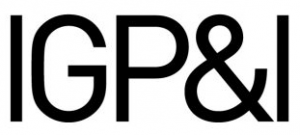Brazil’s soybean industry is poised for a landmark year in 2025, with projections indicating unprecedented production and export levels, according to Gard’s local correspondents Proinde. This could bring about logistical pressures and more claims.

Bumper Brazilian soya bean crop means more claims in China
Written by
Published 08 April 2025
Brazil’s National Supply Company (CONAB) forecasts a production of 166 million metric tons (MMT) – a 12.4 per cent increase from the previous season and a new record, surpassing the 2022/23 peak. This surge is driven by expanded planting, advancements in farming technology and favourable weather conditions.
The United States Department of Agriculture (USDA) projects an even higher figure – 169 MMT for the 2024/25 season. By comparison, the U.S. and Argentina are expected to produce 119 MMT and 49 MMT, respectively.
On the export front, both CONAB and the USDA anticipate that Brazil will export approximately 105.5 MMT of soybeans this season, maintaining its position as the world's leading soybean exporter. China remains the largest buyer, with expected imports of 109 MMT. The EU is also set to increase its imports by 8.5 per cent to 14.6 MMT.
This record-breaking production presents significant logistical challenges. Brazilian ports are expected to handle increased volumes, potentially leading to congestion and delays. In 2024, ports such as Santos, Itaqui, Paranaguá-Antonina, Rio Grande, and Vila do Conde collectively managed 78 per cent of the country's soybean exports. With the anticipated rise in export volumes, these ports may face heightened operational pressures.
Rising damage claims in China
According to data from a Chinese survey firm, there has been a significant rise in soybean damage cases at Chinese ports in 2024 compared to 2023. A total of 43 shipments have been reported with damages, primarily from Brazil (39 shipments), Uruguay (3), and Argentina (1) combined with an increase in shipments from Northern Brazil due to the flooding in the Rio Grande area in April 2024.
This increase in production and export volume projected for 2025 will likely affect the volume of soybean claims, in particular claims made in China. Soya Beans naturally contain mould spores that under certain conditions grow and produce heat within a stow that can result in caking visible mould and darkening of the beans. Whether soya beans will self-heat in this way is determined by the moisture content of the beans at loading, the temperature of the beans with loaded and the time the beans are stored after harvest and during the voyage. The higher the moisture content and temperature at loading, the shorter the safe onboard storage time for the beans. This inherent characteristic of soya beans is called microbiological instability and is discussed in detail in this video.
Although Chinese law in theory recognizes inherent vice as a defence to cargo claims, the courts have applied a very strict burden of proof requiring the carrier to prove that all pre-cautions were taken to prevent damage to the cargo. In many cases, the vessel is determined to be liable for inevitable damage to cargo that resulted from microbiological instability and without vessel fault.
Recommendations
Gard repeats its recommendations to Members on how to best prepare to defend claims for heat damaged soybeans:
Careful monitoring of the cargo at loading and suspension of loading if signs of heating or discoloration/blackening are already present. Such conditions as well as the presence of foreign materials at loading should be reported to the Club so that expert assistance can be provided. More information can be found in our article: Heat damage in soya bean cargoes - the importance of inspections.
Although ventilation will only affect the topmost layer of the stow, showing proper ventilation and record keeping will assist in defending claims in China where the burden of proof is on the vessel to show that ventilation was properly preformed. We have prepared a Master’s checklists for loading and carriage of soya beans that includes detailed recommendations for cargo handling and record keeping.
For further information see our Soya Bean cargo damage topic page.
We thank Proinde for sharing their report.



